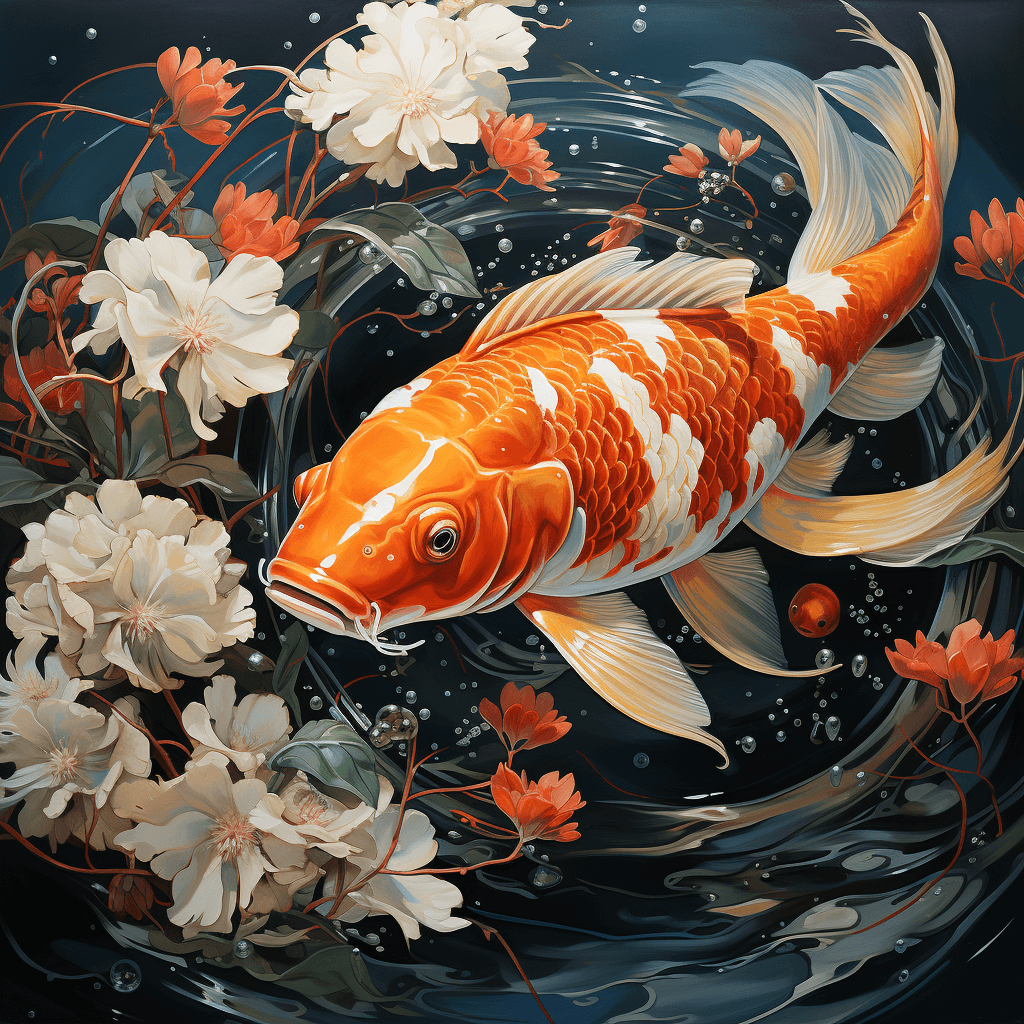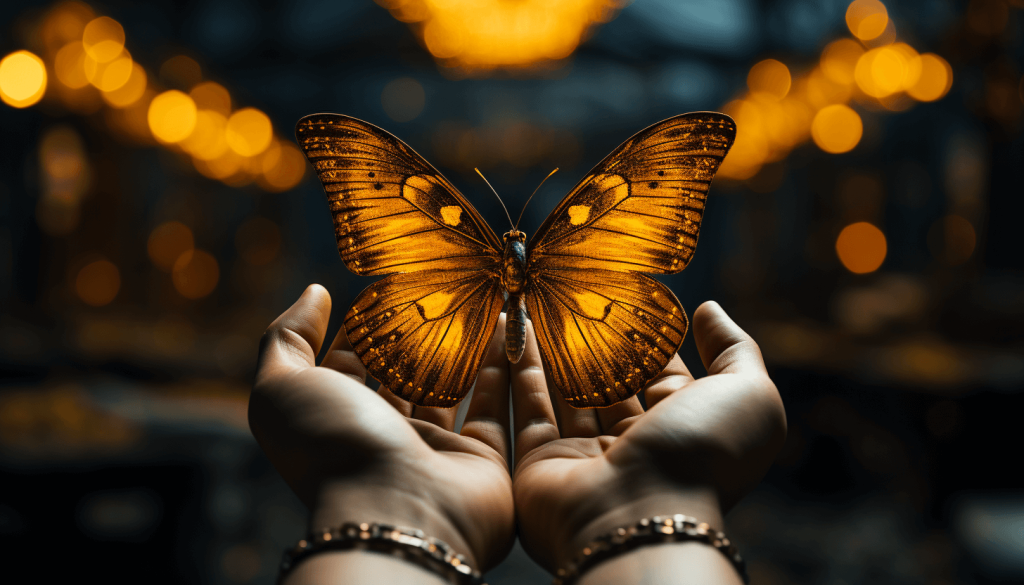How Symbols are Important to Human Narratives
Symbols have always been significant to humans all through the history of communication and expression. Normally, a symbol is a visual representation of an object that has meaning and importance beyond its forms that people can easily identify and relate to experiences or concepts.
What is it about symbols that has such a potent hold on our psyche? What they represent is multifaceted ideas, emotions, and histories that can be expressed briefly and universally. Since well before painted cave drawings to contemporary logos, symbolic imagery has been the vehicle through which humans manage to succinctly convey complex concepts and sentiments.
Below are some of the major symbols of change we are going to look at in this article:
| Phoenix | Ouroboros | Butterfly |
| Wheel | Cherry Blossom | Lotus Flower |
| Koi Fish | Celtic Knot | Koru |
| Yin and Yang | Snake | Adinkra |
Symbols of Change in History
1. The Phoenix:
Portrayed mostly as a fiery bird, The Phoenix best embodies renewal and rebirth. The fire of the Phoenix denotes the cycle of life, death, and rebirth, forever enduring.
2. The Ouroboros:
The Ouroboros, representing the cycle of life, consisting of birth, death as well as rebirth, was depicted in the form of a dragon or snake eating its own tail. It symbolized more than just the legacy of the universe, i.e., eternal nature, but also life’s immutable traits.
3. The Wheel:
The Wheel is one of the ancient societies’ preponderant symbols, because it shows the cyclic flow of time and change. It means the endless turn and linkage of different phenomena in life.
4. The Celtic Knot:
The Celtic Knot, with its interlaced patterns, speaks of eternity and the interrelations between what life is, death, and rebirth are. Its never arriving or never leaving circles speak of the truths about the etherealness of the spirit and related to it subsequent life and death cycles.
Nature as a Symbol of Change
5. The Seasons:
Changing seasons is the way nature takes in expressing a modification for various times. From the inception through spring to the dormancy of winter, every season brings some new step in life, symbolizing a cycle outlining existence.
6. The Butterfly:
The butterfly is one of the most defining symbols of metamorphosis where it undergoes tremendous change transforming from a caterpillar to the beautiful winged creature. A transformation from a landbird to an air traveler could be symbolic of growth, change, and the evolutionary process.
7. The Moon Phases:
It mirrors the rise and fall of life with the waxing and waning phases. The new moon, the waxing quarter to the half-moon and then the full moon before repeating the cycle represents the cyclical changes and rhythms of life.
8. Frog:
The life of a frog is testament to the transitory nature of existence. Starting as an egg, then changing into a tadpole and finally ending as a full-grown adult frog, the life cycle is symbolic of change, progress, and adaptation. Frogs also remind people that changes can be for the better, even when unwelcome at first.
9. Dragonfly:
Rapid active movements of the dragonfly symbolize the spirit of transformation as well as self-realization. The ability to comprehend the relevance of living not only in accordance to face value but also over some water is also noted.
10. Iris Flower:
The Iris flower, named after the Greek Goddess of Rainbows, likes to bloom in early spring, or planted during colder months. The transition of the harsh winter cold into the warm sunlight of spring has been associated with symbols of change, recovery, and renewal.
Change in Floral Symbols
11. The Cherry Blossom:
The Cherry Blossoms originating in Japan consider being the epitome of how brief life and beauty could be. Mostly blooming during springtime, while they help in keeping mind the evanescence of life along with the fact that change is inevitable.
12. The Rose:

The Rose, from bud to blooming to gradual withering, self-expression of life. The rose meaning is an analogy for growth, climax, and persistently but slowly wearing away or dying down of something similar to the living and dying of a human being.
13. The Dandelion:
Finally, the yellow blossomed Dandelion transforms into a fragile seed bearing puffball. Such transformation represents adaptability, resilience, and thrive ability in different circumstances.
14. Narcissus/Daffodil:
They are called Narcissus or Daffodils and they usually open first of the spring bulbs, existing as a sign winter is ending and a new growing season has begun. In general, they symbolize rebirth which anew has to do with new beginnings of things. In Chinese symbolism, Daffodils carries good luck and this flower is very often used for Chinese New Year ceremonies.
15. Daisy:
Symbolizing childbirth, motherhood, and new beginnings, the Daisy grows everywhere in this world. In Norse folklore, it was regarded as holy because it represented the goddess of love, beauty, and fertility: Freyja. The name “Daisy” is derived from the phrase “day’s eye,” a term given to it because it opened when dawn broke and closed at dusk.
16. Calla Lily:
The Calla Lily interestingly is not one of the true lilies. The meanings associated with the flower are beauty and rebirth or resurrection. Its dual symbolism suggests life and death or passion and rebirth. Like the 6th wedding anniversary, it is traditionally given to commemorate significant life events.
Cultural Symbols of Change
17. The Yin and Yang:
 Chinese philosophy has it as the Yin and Yang which depict balance within change as well as duality. It is a representation that different peoples across the world have used for over two thousand years to illustrate how the opposing forces are just but complementary and exist intertwined in nature, where every being exists in a cyclical pattern of change and subsequently balance.
Chinese philosophy has it as the Yin and Yang which depict balance within change as well as duality. It is a representation that different peoples across the world have used for over two thousand years to illustrate how the opposing forces are just but complementary and exist intertwined in nature, where every being exists in a cyclical pattern of change and subsequently balance.
18. The Broken Chain:
Symbolism for The Broken Chain amazingly connotes freedom from restraints imposed in the past, and this universally used sign emblematizes matters touching on this universal theme by signifying liberation, rebirth, unrestricted forward movement.
19. The Chameleon:
Often linked to the adaptability, Chameleon is worshipped for its ability of a color transformation in accordance with its environment. This signifies the uniqueness of the vitality of change in adapting one’s situation reflecting the essence of change and transformation.
20. The Adinkra:
Adinkra symbols represent ideas and aphorism, with their origin being the Akan people in Ghana. Each symbol represents a different meaning that many are based around ideas of change, transformation or life’s journey.
The Matryoshka Dolls:
Popularly referred to as Russian nesting dolls, the Matryoshka Dolls are a set of one wooden doll put inside the other in decreasing size. They depict the layers of personality, growth and inter-relation between various stages of life.
22. The Hammer and Sickle:
As a symbol of the Soviet Union, Hammer and Sickle meant an alliance between industrial workers and agricultural labor. On its path, it signifies changing times, revolution, for a new social order.
Change Symbol from Various Countries
23. Maori Koru (New Zealand):
With respect to native culture of New Zealand, the Maori Koru represents a natural spiral shape and an integral part that principally denotes new life, growth, renewal, promoting a sense of peace, tranquillity, positive change in beginning as well as to achieve continuity of life.
24. Celtic Knots (Celtic culture):
With intricate intertwining patterns, Celtic Knots speak of infinite looping. It depicts eternity and the continued connectedness of life which includes birth and rebirth.
25. African Adinkra (Ghana):
The Adinkra symbols are traced back to the Ghanian culture of the Akan people which bear meanings relative to general conceptual ideas. Most of the symbols, each of a different color and unique meaning, represent in most cases, change, transformation, and the cycle of life path.
26. Japan Koi Fish:

The Koi Fish, often seen swimming upstream in Japanese art and folklore symbolizes perseverance, resilience, and change. The journey of the Koi against the current in its life exemplifies challenges one faces in life and strength that is required to overcome challenges.
27. Lotus Flower (Various Asian Cultures):
A flower that pristine blooms from dirty waters, the Lotus Flower symbolizes purity, rebirth, and spiritual enlightenment in various Asian cultures. Its growth from the dross at the bottom to the surface water bespeaks a spiritual emergence and a fresh start.
28. The Nordic Runes (Nordic Countries):
All the old Nordic Runes that represent one of the first alphabetic symbols amongst the Norse and other Germanic peoples in their writing system do all bear various meanings. Like the Dagaz, many of those runes stand for new day or awakening to symbolize change and transformation.
Numerical Symbols of Change
29. The Angel Number “555”:
For Thai people, “555” has a great meaning. But in views of angelic numerology, this “555” number is believed usually related and connected to both transitions and variations, probably in a spiritual way but for Thai, it’s time for them to tie with fatality. This is because in Thai, the number “5” when pronounced is pronounced as “ha”, thus making “555” sound like “hahaha” which refers to laughter. Though one must be culture-sensitive upon seeing this number as it has different interpretation upon looking at different context.
Symbols of Change in Literature and Art
30. The Road or Path:
Most typically, a road or path when used as a symbol in literature or art represents a journey of change, discovery or self-realization that the protagonist undertakes. The indication is fundamentally the choices, obstacles, and changes faced by the characters while traversing through the landscapes of their life.
31. The Bridge:
This bridge works to be a strong metaphor of the past blending with the future in its finest of excellence. It signifies transition, connection, and bridges between gulfs – be it physical, emotional or even temporal.
32. The Storm:
Storms in their attribute of turbulent energy epitomize chaos, turmoil, and emotional disturbance. They also depict the image of a tranquil aftermath representing the serene and the calm phase that usually succeeds a period of great transformation.
Religious and Mythological Symbols for Change
33. The Cross:
Symbolically, it looks like a cross symbol in Christian beliefs that represents a transformation and a sacrifice to redeem man for their salvation. This would symbolize redemption as an ideal of self-sacrificed faith for the hope of mankind, not from man but by divine intervention.
34. The Lotus Flower:
In Buddhist symbolism, the Lotus Flower is sacred due to its pure origin within dirty waters representing the rebirth towards spiritual perfection or purity and enlightenment. Its journey from the mud at the bottom to unsoiled water on the surface represents spiritual emergence from impurity to a new life and awareness.
35. The Snake:
A snake symbolizes, for many cultural and religious civilizations, the representation of renewal, changes, and regeneration. Changing the skin is reborn over and over again.
Symbols for Personal Transition
36. The Ladder:
An often metaphor for a ladder is its representation in various forms of fine art and literature, symbolizing the ascent to personal goals, aspirations, dreams, or upward steps into higher states of consciousness. Each rung represents a step towards self-development, overcoming challenges, possibly learning something new.
37. A Looking-Glass:
The mirror is a far better symbol when it comes to introspection and self-realization as opposed to the external reflection. The mirror spurs an individual to take a glimpse inside himself or herself themselves, measure their transformations therein, as well as witness how they have arrived at growth from within.
38. The Shedding Skin:
As snakes shed their skin in order to grow bigger, the shedding of skin in personal growth is a metaphor for shedding the past – the burdens, the outdated beliefs, and old identities. The idea of letting go so one may allow new opportunity, experience, and a new sense of self into life.
Embracing the Symbols of Change
Throughout history, symbols have held a timeless power in illustrating the concept of change. From ancient civilizations to modern societies, these symbols have been a constant, guiding individuals and communities through periods of transformation.
In recognizing and accepting these symbols, we acknowledge life’s cyclical nature and empower ourselves to move gracefully and elegantly through change with strength and flexibility. Whether it is growth within our individual life processes, throughout the shifts that take place across humanity as a whole, or even in the changing tides of our spiritual journey, these symbols reflect back to us the inevitability of metamorphosis in driving the progress and evolution of life.

